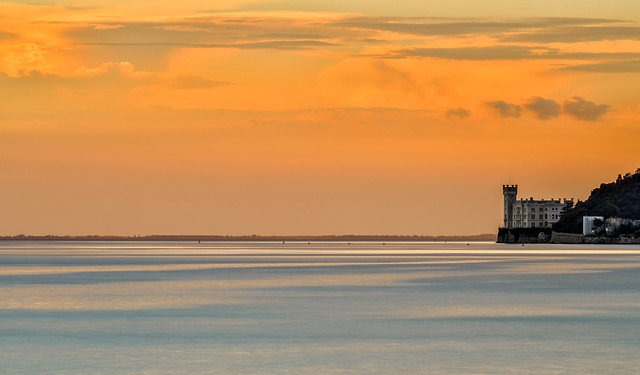Vermouth truth: your guide to world vermouths
Imagine yourself on the high, arid Iranian plateau around 5,400 BCE. The Copper Age has started to the west, and agricultural practices have swept across the region, stabilizing food sources for the first time. Now that you’ve checked off food and shelter on your cave art checklist, what’s next on your list of necessities?
Wine.
And in fact, archaeologists have unearthed the world’s oldest-known wine jar with traces of herbs in Tepe Hajji Firuz, Iran, along Turkey’s eastern border near Iran’s 10th largest city, known as the “Paris of Iran”, Urmia.
Wine production rippled throughout the world in the intervening years. Both the ancient Greeks and Chinese placed a premium on wines flavored with herbs and spices as early as 1,200 BCE. (News traveled slower in the days before trains and telegrams.)
Today, you can’t enjoy a Manhattan without a good red vermouth, or a bracingly cold Martini without at least a whisper of a dry white vermouth. But beyond being “wine with herbs”, what exactly is vermouth? Read on for jarfuls of knowledge droplets.
Aromatized and Fortified Wines
In their simplest form, “aromatized wines” are nothing more than wine flavored with aromatic botanicals. When you take them a step further by adding spirits to give them a longer shelf life, they become “fortified wines”. The undisputed leader in fortified/aromatized wines is vermouth.
While the EU has a set of specific standards for vermouth (certain sugar levels, required base of at least 75% wine), the US requires little more than that vermouth have “ characteristics attributed to vermouth”. It’s kind of like defining a car as a machine with normal car features. Strange, right?
Of course, vermouth isn’t the only type of aromatized wine. Iberian sangria; Italian clarea and zurra; German variations like Kalte Ente, Gluhwein, and Maiwein used to help celebrate the ancient fertility rite of May Day — they’re all types of aromatized wine.
But when it comes to spirits, vermouth reigns supreme in both classic and au courant cocktails.
The name vermouth comes from the German name for the bitter herb wormwood: vermut. You may recall wormwood from folklore as one of the original psychotropics, in absinthe. Researchers have since refuted this claim, instead pointing out that the “hallucinatory effects” of absinthe were likely due to its alcohol content rivaling that of Everclear.
So when you sip vermouth in a cocktail or on its own — yes, straight-sipping vermouth is totally a thing — have no fear, as vermouth is made of wine, harmless wormwood, and other herbs depending on the brands you’ll see below. We’ve split our list into the two main styles of vermouth — dry white (oft-used for martinis) and sweet red (oft-used for Manhattans, Negronis, and other cocktails with sweet notes).
Dry whites
Dolin
- Style: Dry white (most popular expression)
- Flavor profile: Light, clean, dry white vermouth
- Ideal cocktail: 50–50 Martini
Created around 1830 in France’s vermouth hotbed of Chambery near the mountainous border of Italy and Switzerland, Dolin produces 4 expressions:
- Dolin Rouge — a full-bodied red vermouth drier than most on the market,
- Dolin Dry — a light, clean, dry white vermouth,
- Dolin Blanc — an herbal and slightly sweet vermouth,
- Chamberyzette — a combination of Dolin Dry and strawberry juice.
We’ve found Dolin Blanc to play quite nicely with our silver whiskey, American Spirit Whiskey, in a riff on the Manhattan, courtesy of our friends at the Lobby Bar located in Atlanta Hartsfield-Jackson Airport Marriott.
Noilly Prat
- Style: Dry white (most popular expression)
- Flavor profile: Marsala, chamomile, gentian
- Ideal cocktail: Traditional Martini
Another vermouth of French origin, Noilly Prat is generally reminiscent of marsala and is made in Marseillan (not to be confused with Marseilles —which is 130 miles away). The producer’s 3 different styles are:
- A dry white with chamomile and gentian
- A sweet red with saffron and cloves
- A mellow “ambre” expression with cardamom and lavender
Stock SpA
- Style: Dry white
- Flavor profile: Combination of 50 herbs, seeds & spices, many of them bitter
- Ideal cocktail: Martini
The only Italian vermouth-maker on our list not based in Turin, Stock SpA nonetheless produces a complete line of Torino-style vermouths at its Trieste, Italy headquarters near the Slovenian border along the Adriatic Sea. These include a sweet red, a dry white, and an orange-forward version called “Gran Gala”.
Prior to World War I, Trieste was a Slovenian province of the Austro-Hungarian empire. As part of the London Treaty of 1915, in which Italy secretly joined the side of the Allies against Germany, Italy received the region surrounding Trieste. They promptly annexed it.
For the next 41 years, the city witnessed strife amongst Slovenian nationals, Italian emigres, Nazi troops, and Yugoslav communists. (Residents at this time may have found it unfortunately coincidental that the city’s name, though linguistically unrelated, is one letter removed from the French word for sad, triste.)
In 1947, the UN officially recognized Trieste as an independent city-state, until an accord in 1954 officially transferred the city and surrounding area to Italy as a civil administration.
Today, the city’s active port has made the region one of Italy’s wealthiest, and in 2012, LonelyPlanet.com rated Trieste as the most underrated travel destination in the world.
Intermission: We love to chat about all things spirits. If you like what you're reading, consider becoming a Supporting Reader.
Sweet Reds
Carpano Antica
- Style: Sweet red
- Flavor profile: Licorice, figs, cocoa, vanilla
- Ideal cocktail: Blood & Sand
You're probably thinking: It really looks like they walked to their local bottle shop, took a bottle of Carpano Antica off the shelf, placed it on the floor where the natural lighting was good, snapped a photo, and then poorly cropped the photo so you can see plastic racks in the upper corners. You'd be entirely off-base in thinking this.
Turin, in northwest Italy not far from France’s Chambery region, has long been the world’s epicenter for red vermouth. Carpano Antica started it all in 1786, creating a high-end red vermouth from an ancient recipe. Tipplers often referred to it as vermouth alla vaniglia because it incorporates subtle hints of vanilla.
Cocchi di Torino
- Style: Sweet red
- Flavor profile: Red fruit, orange, herbs
- Ideal cocktail: Negroni
Cocchi di Torino is the only vermouth in Italy that qualifies for Italy’s Vermouth di Torino DOC status, similar to qualifying for “Cognac” or “Calvados” status in France. With a base of moscato, Cocchi di Torino is sweeter and more floral than other red vermouths, which are often more herbal. (As an aside, almost all vermouths are made from white wine grapes like moscato, even the vast majority of red vermouths.)
Many cocktail enthusiasts and mixologists, including Atlanta’s own Greg Best, insist that the perfect Negroni relies on the intense bitter orange of Campari (a constant) and Cocchi di Torino as its vermouth.
Martini & Rossi
- Style: Sweet red (most popular expression)
- Flavor profile: Sweet, herbal, vanilla
- Ideal cocktail: Manhattan
The owners of the afore-mentioned Noilly Prat, the Martini & Rossi company also produces the Martini brand of vermouths — perhaps the most ubiquitous vermouth brand in the US. Like all the other Italian vermouths mentioned previously, Martini & Rossi produces their white/dry and red vermouths in Turin.
P. Quiles
- Style: Sweet red (most popular expression)
- Flavor profile: Floral, cinnamon, ginger, nutmeg
- Ideal cocktail: Spanish Warmth
These days, Spain is the third-most gin-thirsty nation in the world. With a taste for gin comes a very real need for vermouth (or whispers thereof), and since the 1780s, Primitivo Quiles has unselfishly been there for Spain’s residents and their thirst.
Unlike most other vermouth producers, P. Quiles uses red wine grapes as its base. And despite producing its vermouths in Alicante, Spain, along the sunny Balearic coast, some critics have described P. Quiles’ red Mourvedre grape-plus-herb vermouths as exhibiting an “Alpine” style.
Punt e Mes
- Style: Sweet red
- Flavor profile: Bitter orange, coffee, cola
- Ideal cocktail: Americano
Not far from where Cocchi di Torino is produced in Italy’s Piedmont region sits the site of Punt e Mes, Italian for “point and a half”.
What does point and a half mean?
The story goes that Piedmontese stockbrokers would signal with their thumb up and a swipe of their palm, letting the barkeep know they wanted 1 part vermouth with 1/2 part bitters. In the process, these swilling stockbrokers established an entirely new style of vermouth: vermouth con amari, or red vermouth with bitters.
“New world” producers
Some have taken to calling vermouths made in the US as “new world” vermouths.
Companies qualifying for this nouveau-riche-sounding classification include California’s Vya Vermouth, Brooklyn’s Uncouth Vermouth, Oregon’s Ransom Spirits Vermouth.
Their flavor profiles range the gamut, but they are all more delicious than the “new world” designation otherwise suggests.







